Earthrise, one of the most famous images in the world, is almost always orientated incorrectly, at least from how it was originally shot.
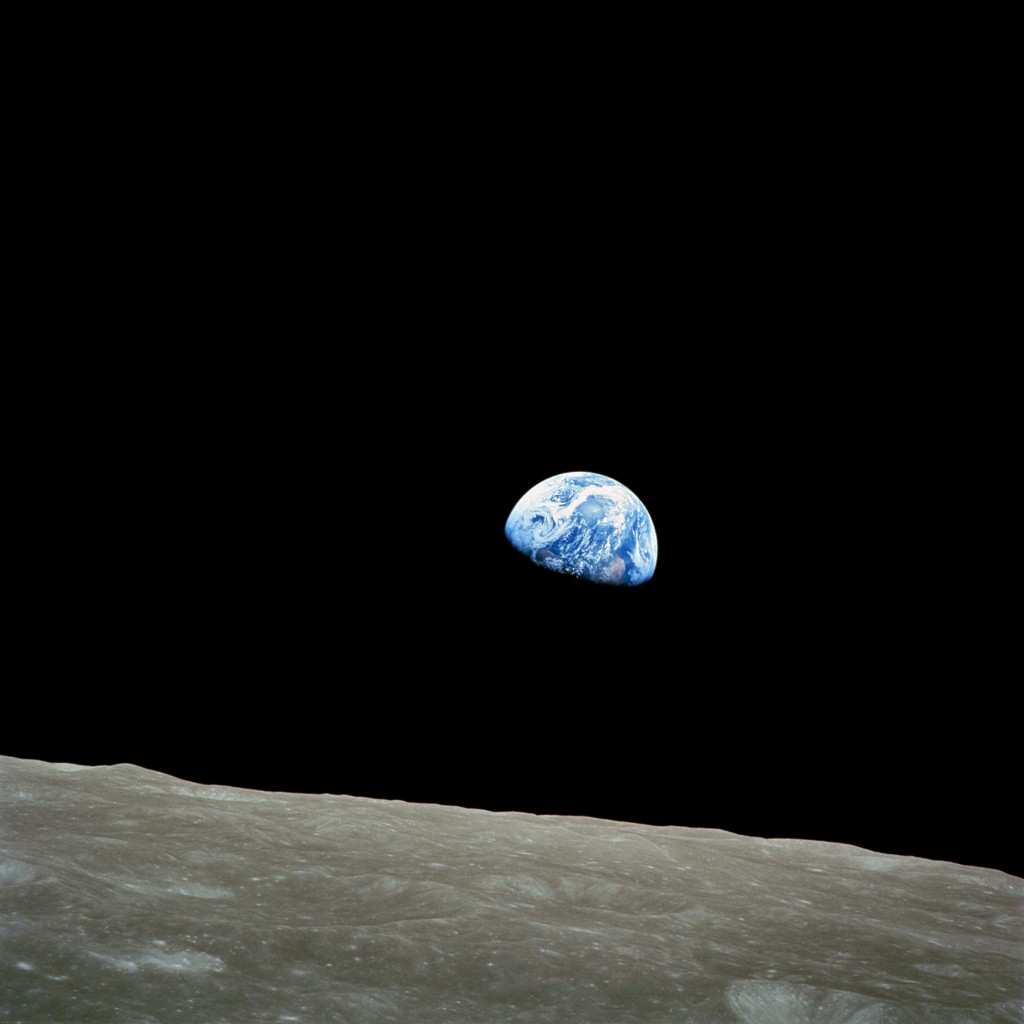 It was originally taken by William A. Anders on December 24, 1968 aboard Apollo 8 as it orbited the Moon, he and his fellow travellers were the first humans ever to see the far side of the Moon. The original image is available at the Apollo archive: http://www.apolloarchive.com/apollo_gallery.html, AS8-14-2383, but even that is rotated from how it was taken (see above). Its original framing had the Earth on the left and the Moon on the right, with the Sunlight coming in from the left. (Lots more info here: http://www.abc.net.au/science/moon/earthrise.htm)
It was originally taken by William A. Anders on December 24, 1968 aboard Apollo 8 as it orbited the Moon, he and his fellow travellers were the first humans ever to see the far side of the Moon. The original image is available at the Apollo archive: http://www.apolloarchive.com/apollo_gallery.html, AS8-14-2383, but even that is rotated from how it was taken (see above). Its original framing had the Earth on the left and the Moon on the right, with the Sunlight coming in from the left. (Lots more info here: http://www.abc.net.au/science/moon/earthrise.htm)
Another interesting thing to note is that the Earth isn’t actually rising. In fact it is simply moving into view as the Apollo 8 module orbits around the Moon back to the side that faces the Earth. The Moon is tidally locked, which means the same side always faces towards Earth, however this isn’t perfect and it partially wobbles so that about 65% of the Moons surface – rather than 50% – can be visible of several weeks. If you were lucky enough to be standing on the edge of the face that faces Earth, then you would indeed see an Earth rise – but it would take 48 hours to rise above the horizon!
Even though it’s such a nice photo I wondered if I could enhance it a little, so I thought I’d add some stars in to the background, in fact, maybe even the right stars. So I opened up the program Stellarium – a photo realistic planetarium – and rewound back to 1968, I’d need the precise date and time but this isn’t to hard to find given the meticulously records they kept.
From the transcript of the radio talk between the Earth and Apollo 8 (here: http://www.jsc.nasa.gov/history/mission_trans/AS08_CM.PDF, page 114), we see that the picture was taken 3 days 3 hours 48 minutes and 49 seconds (or there about…) after the launch time. The launch time was 7:51:00 a.m. Eastern Standard Time on December 21, 1968, which is 12:51:00 p.m. GMT on December 21, 1968. When we add those together we have 16:39:49 on December 24th, 1968.
Using Stellarium I can set the date and time and position myself around the Moon and point towards the Earth, just take off the atmosphere effect, turn off the labels, and turn off dark adaption and I can take a shot of the background stars.
This example 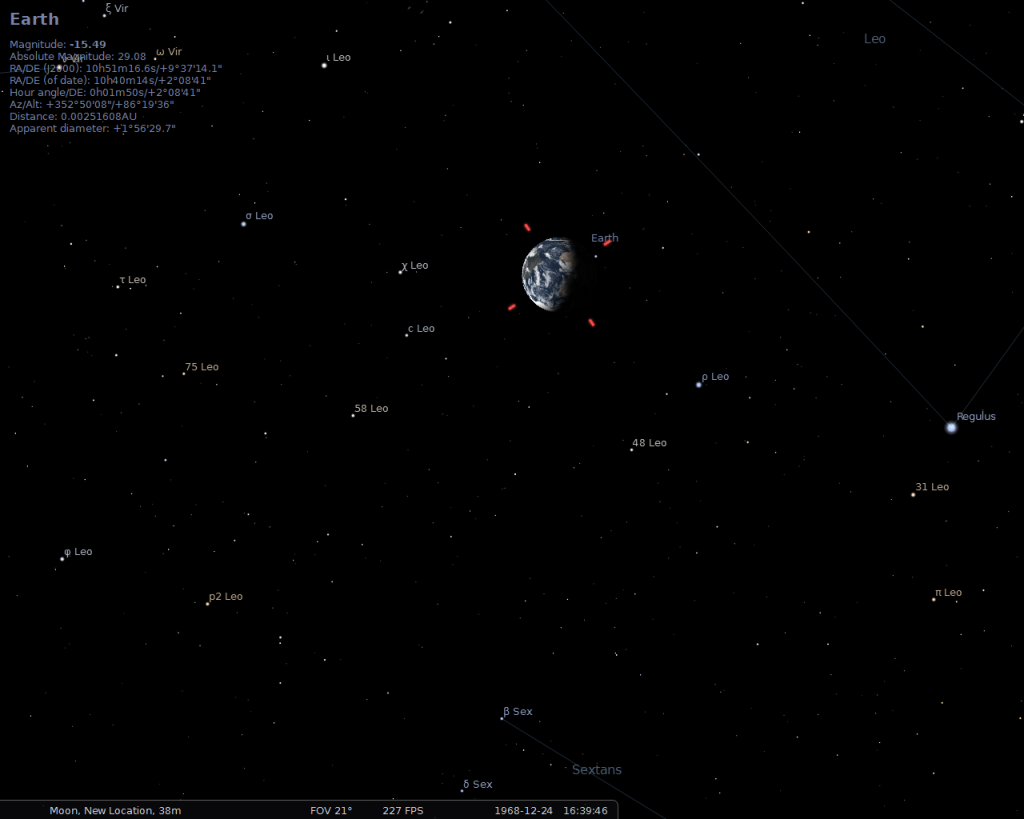 Here’s the screen shot but with the labels still turned on. You can see the bottom edge of the constellation of Leo in the top-right, and various other stars, mostly in Leo.
Here’s the screen shot but with the labels still turned on. You can see the bottom edge of the constellation of Leo in the top-right, and various other stars, mostly in Leo.
It’s not a perfect fit but it looks pretty good, here’s the finished article. 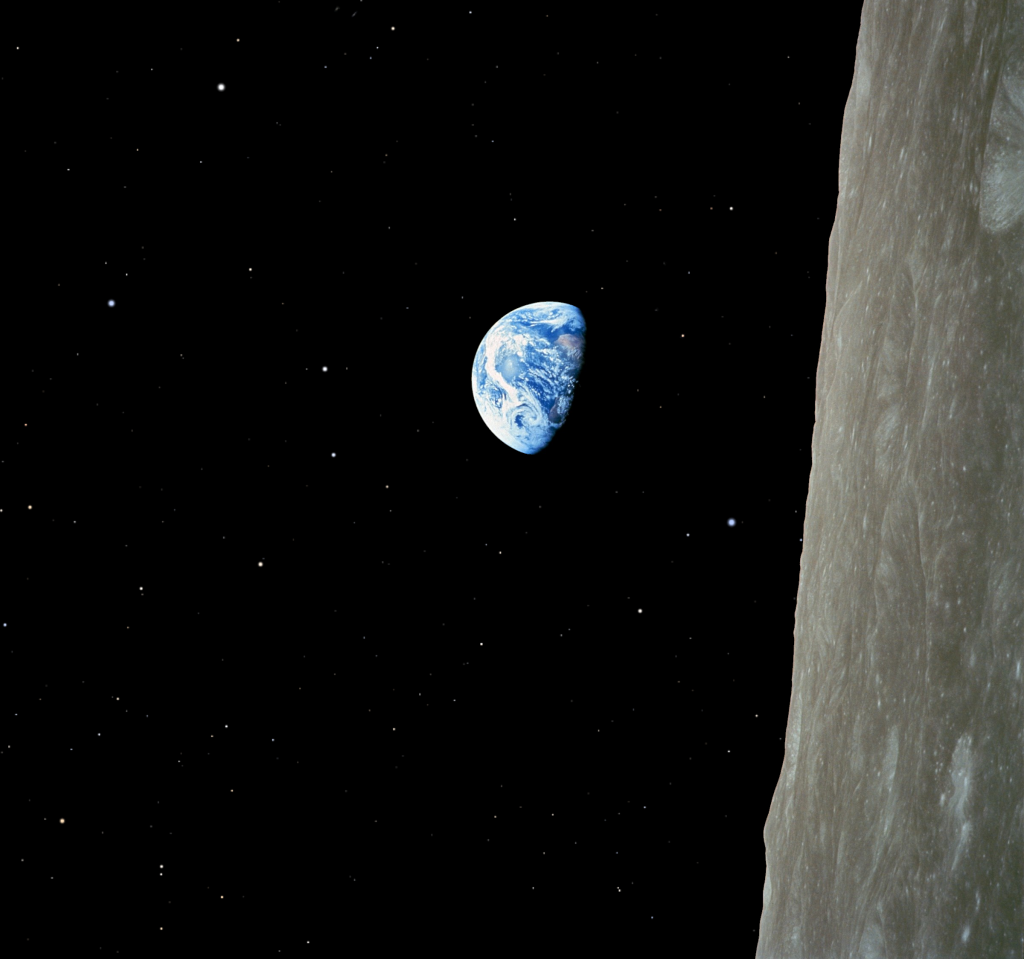
Now that I took the time to make a template of the Moon and Earth photo, I can add other Space photos to the background such as these:
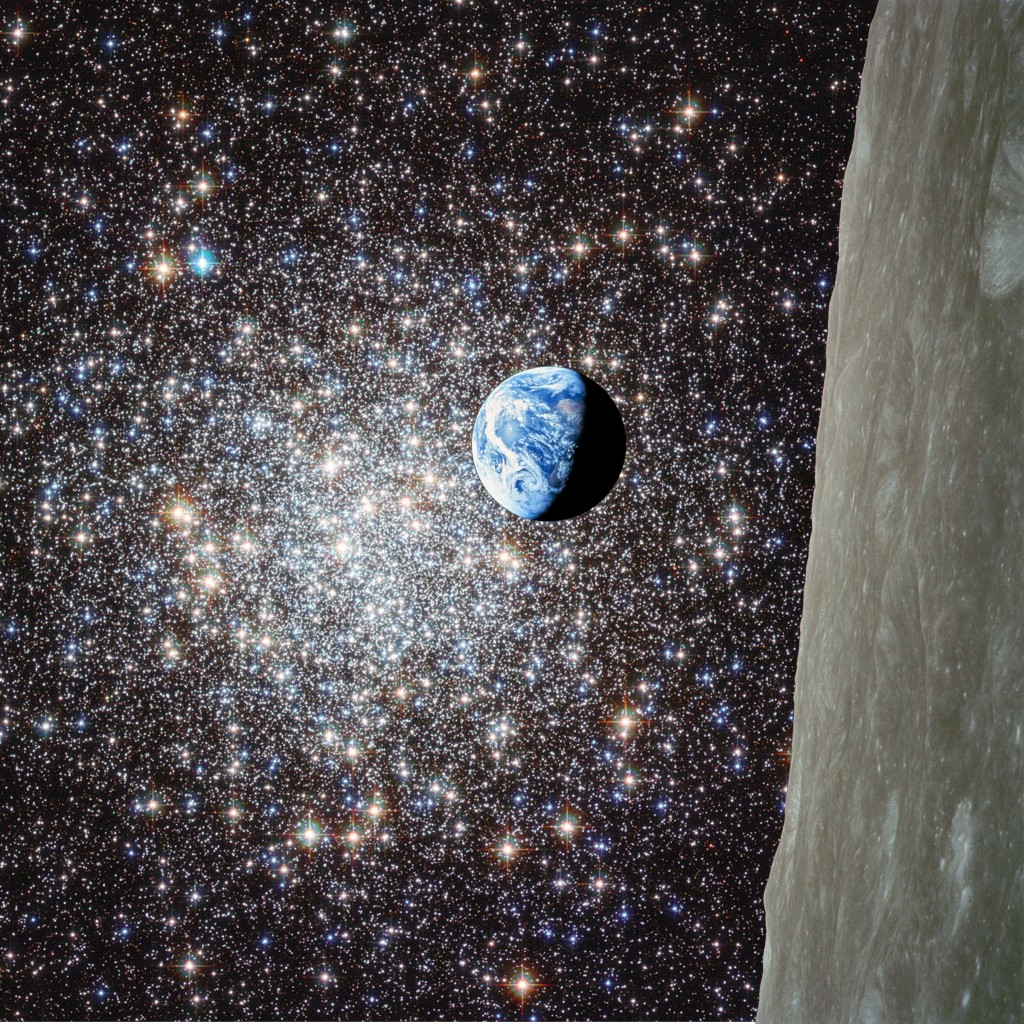 This has a background from Messier 9 star cluster. This particular one reminds me of the story by Isaac Asimov called Nightfall. But I don’t want to give to much away. (But you can listen to it here: http://escapepod.org/2007/04/05/ep100-nightfall/ , highly recommended.)
This has a background from Messier 9 star cluster. This particular one reminds me of the story by Isaac Asimov called Nightfall. But I don’t want to give to much away. (But you can listen to it here: http://escapepod.org/2007/04/05/ep100-nightfall/ , highly recommended.)
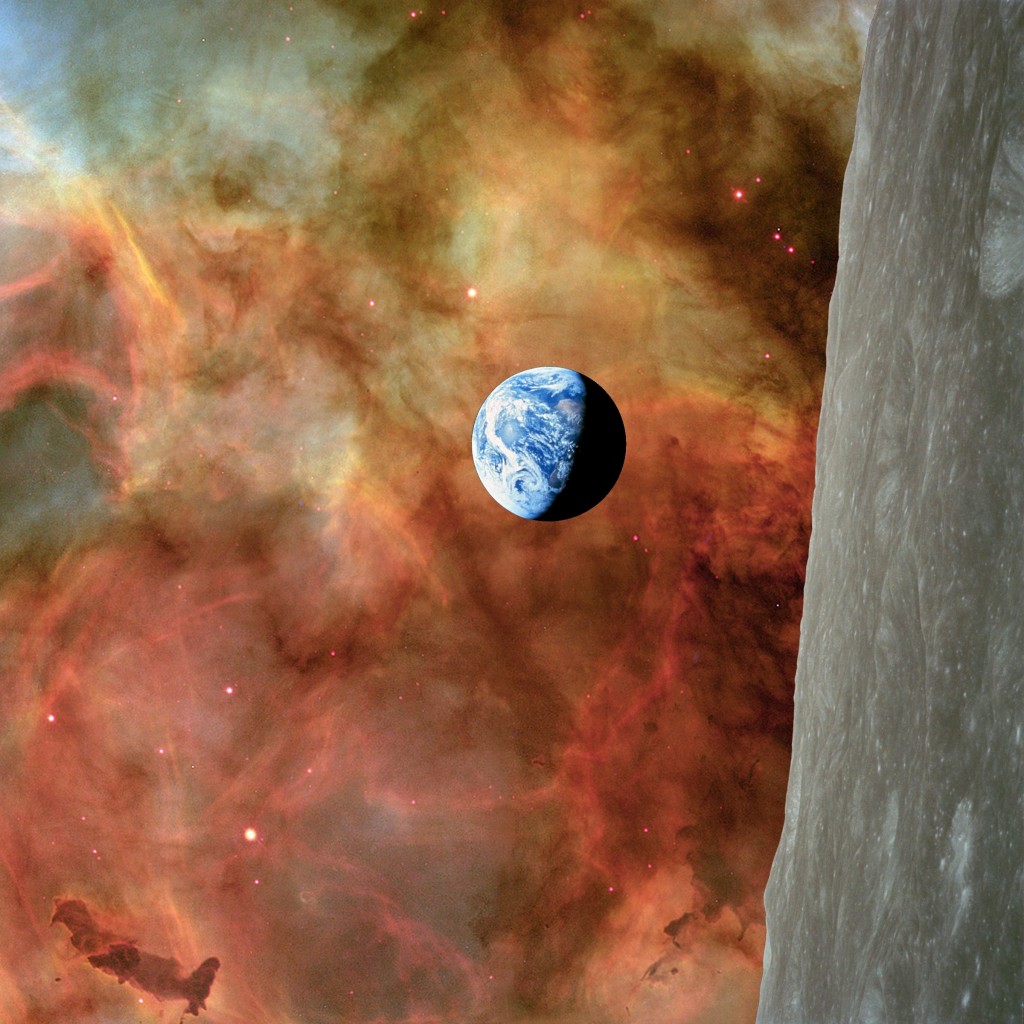 Carina Nebula backdrop. I like the sharp contrast between the Moon and the nebula here.
Carina Nebula backdrop. I like the sharp contrast between the Moon and the nebula here.
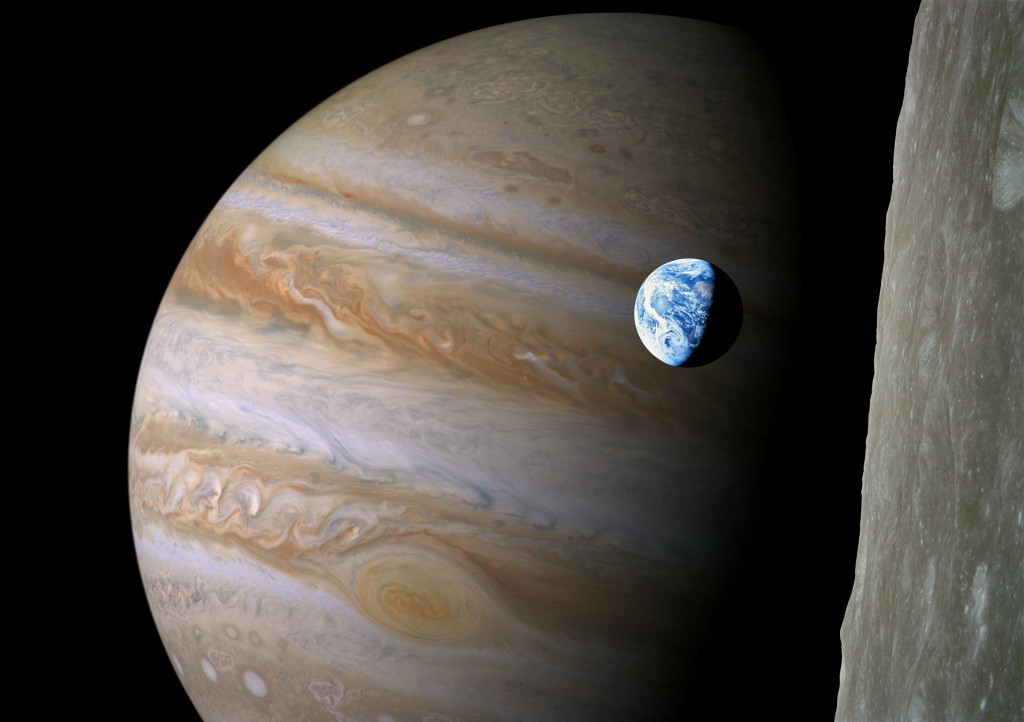 This has an image of Jupiter, it’s at about 2:1 scale meaning Jupiter should be twice as big as it appears here (if we assume the Earth and Jupiter are right next to each other), however the image looks more interesting with Jupiter appearing to be some distance behind the Earth. (Jupiter image: http://photojournal.jpl.nasa.gov/catalog/PIA04866 )
This has an image of Jupiter, it’s at about 2:1 scale meaning Jupiter should be twice as big as it appears here (if we assume the Earth and Jupiter are right next to each other), however the image looks more interesting with Jupiter appearing to be some distance behind the Earth. (Jupiter image: http://photojournal.jpl.nasa.gov/catalog/PIA04866 )
and the last one: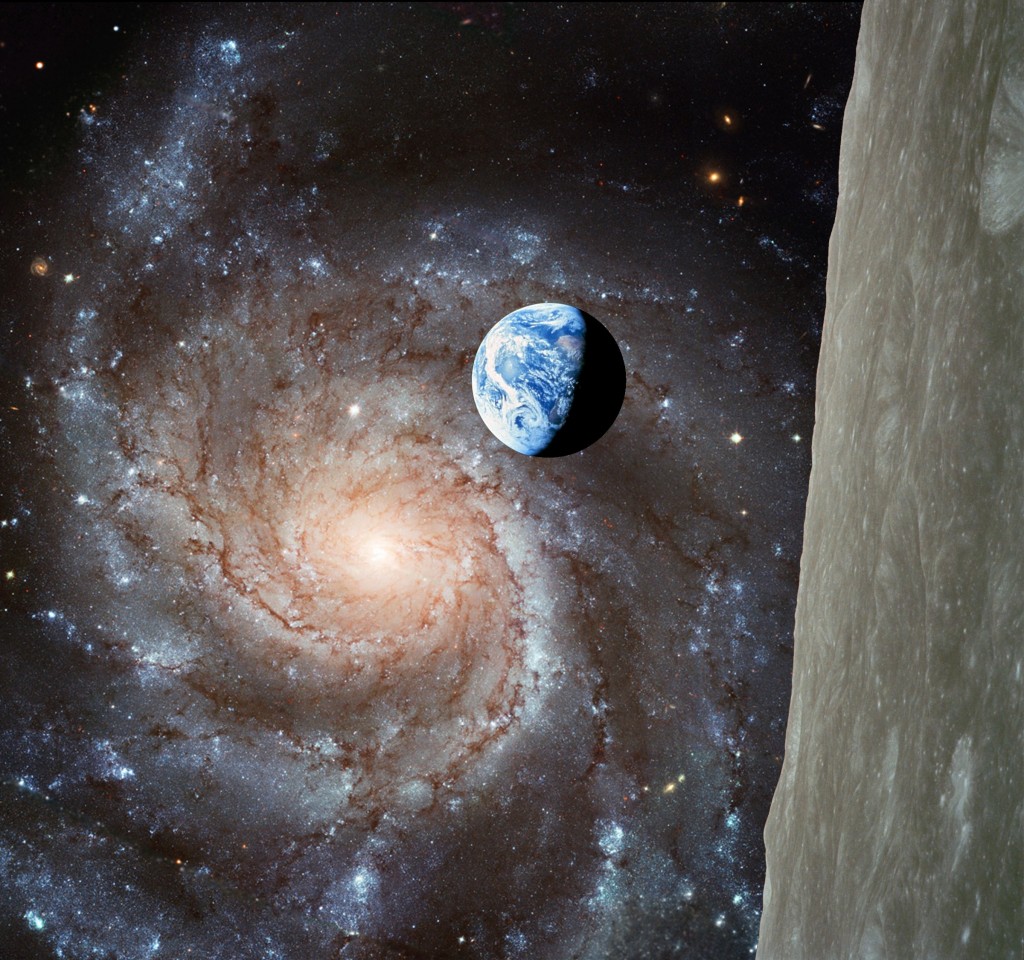 The Pin Wheel galaxy. Somewhat reminiscent of the last scene in Star Wars: The Empire Strikes Back.
The Pin Wheel galaxy. Somewhat reminiscent of the last scene in Star Wars: The Empire Strikes Back.
All these images are taken from the Space Telescope website: http://www.spacetelescope.org/
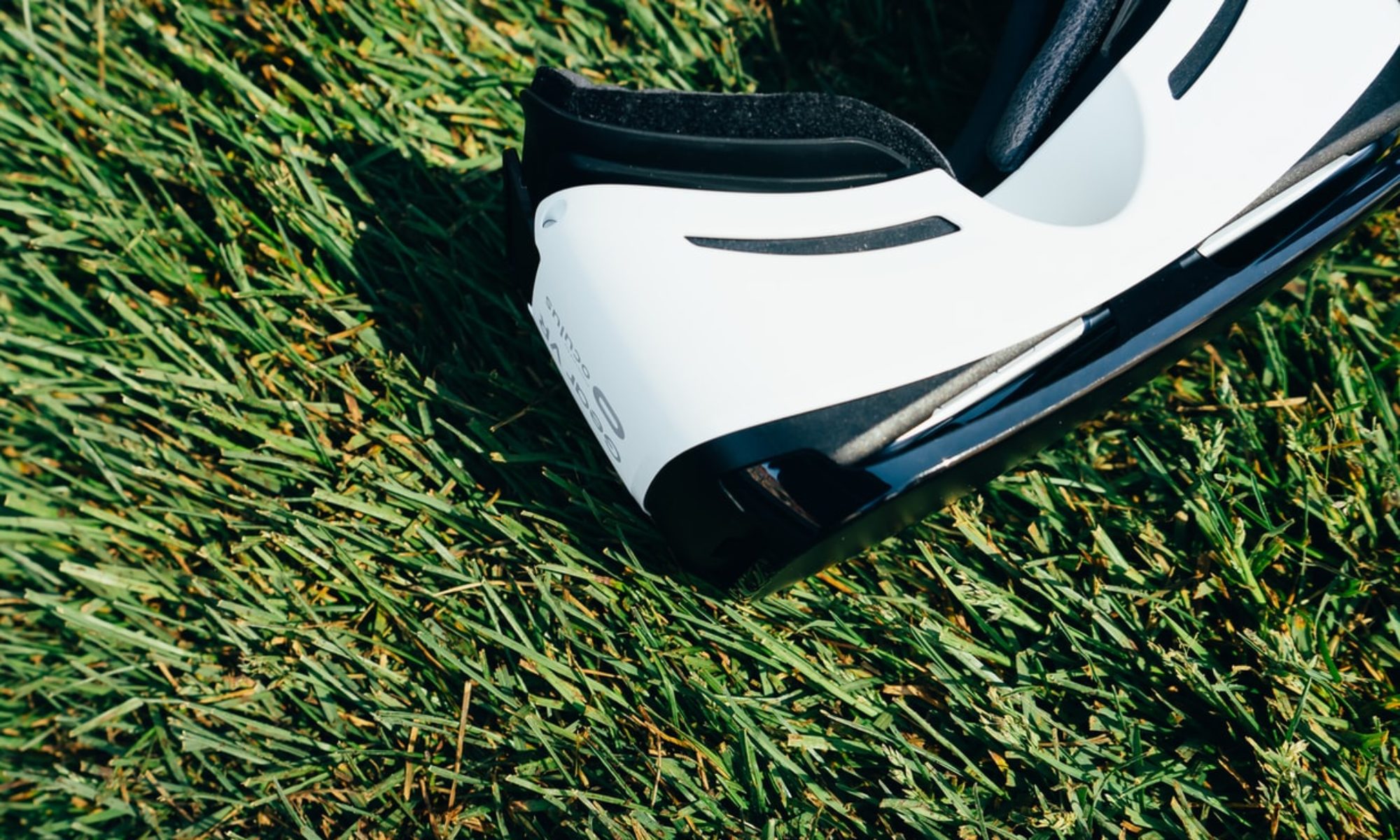
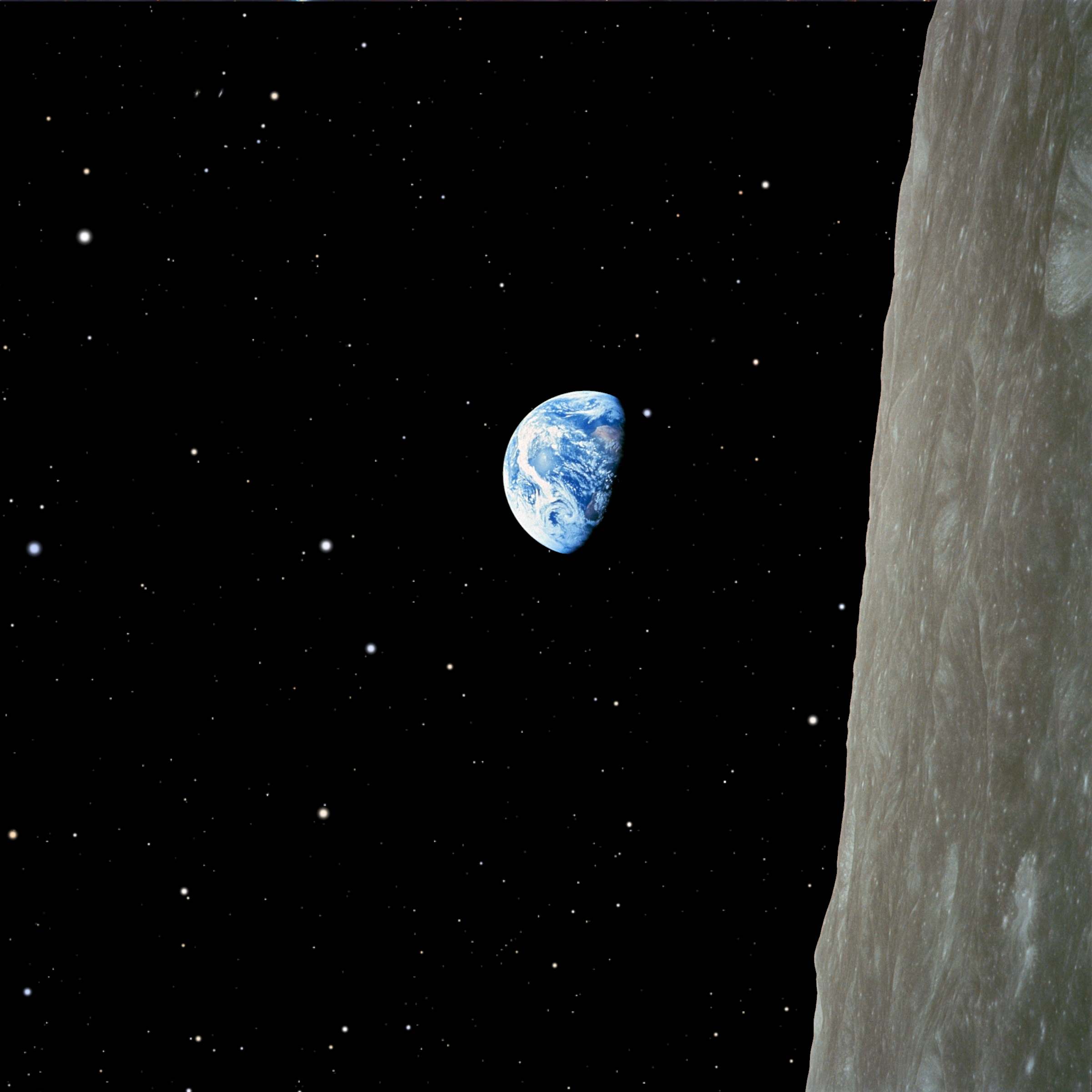
I happen to be commenting to let you understand what a terrific experience my child obtained reading your blog. She picked up numerous details, including what it’s like to have a great coaching heart to have the others with ease completely grasp certain tricky issues. You undoubtedly did more than our own expectations. Thank you for displaying those good, dependable, informative and fun tips about the topic to Tanya.
Dear Sirs I think earthrisen is a profound awareness of us and our planet. Humanitys birthday of self awareness. When had we been able to look at our home. Now we know its ours, just its not ours. Thank you I admire your work. Space is freeing.